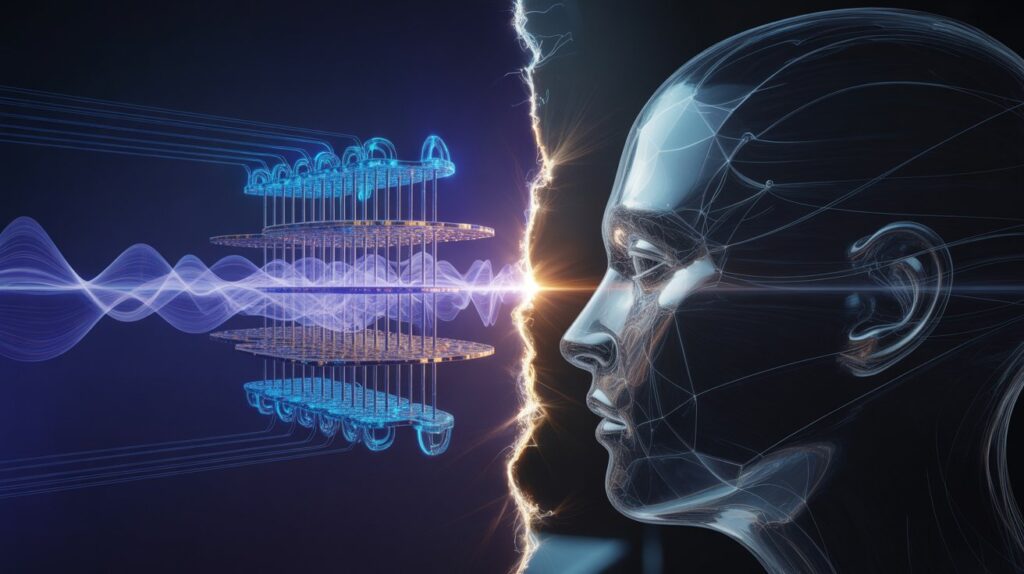Contents
What is a quantum computer, and how does it work?
A quantum computer differs from a classical one in that instead of bits (0 or 1), it uses qubits, which can exist in a state of superposition—being both 0 and 1 at the same time. This means a quantum computer can process a huge number of states simultaneously.

The fundamental principles of a quantum computer are:
- Superposition: A qubit exists in many states at once, until it is measured.
- Entanglement: Multiple qubits can be linked so that the state of one instantly affects the state of another.
- Interference: The wave nature of quantum states allows the computer to amplify desired results and suppress undesired ones.
- Measurement: Upon measurement, the superposition “collapses” into a single definite state, which becomes the outcome of the computation.
How quantum algorithms are structured
Let’s take a popular example—the Grover algorithm for searching for an element in a database:
- A superposition of all possible states is created.
- A special function—the oracle—is defined, which marks the desired states by changing their phase.
- Through interference, the algorithm amplifies the probability of obtaining the marked state.
- Measurement yields the desired result with high probability.
Here, the key figure emerges—the oracle.
The Oracle Paradox: Physics and Meaning
The oracle is a logical construct created by a human. It sets the condition by which a state is considered “correct”:
- On the logical level, this is a straightforward action: a function that checks a condition.
- On the physical level, it is a set of quantum gates (operations) that invert the phase of the wave function for the “desired” state.
A paradox arises: how does the physical system “know” which state needs to be marked? On the physical level, the oracle is just a series of pulses and gates, fundamentally indistinguishable from noise.
Physics does not give an unambiguous answer. It merely describes the evolution of states and interference. But how does the form, logically and meaningfully set by a human, force the physical qubits to behave in a way that amplifies the probability of the desired outcome?
Where is the breach in materialism here?
Materialism claims that reality is entirely determined by physical laws. But in the case of quantum algorithms, a strange thing happens:
- Physics has no local knowledge of what the “correct answer” is.
- Yet, the entire system behaves as if it responds precisely to the meaning defined by the human.
This point becomes a “breach” in the materialistic approach. If the physical system responds to the meaningful structure of the algorithm, then meaning itself is not just a byproduct of physics but, on the contrary, fundamentally influences physical reality.
The Semantic Model and the Resolution of the Paradox
In the semantic model, reality is not just a set of mindless particles and fields, but a structured semantic space. Matter becomes secondary, while meaning is primary—it determines how physical states will behave.
The quantum computer becomes a tool that directly demonstrates this principle. It does not simply compute “randomly.” It computes according to the semantic route embedded in it. It is this route that determines which states will be amplified and which will disappear as a result of interference.
Final Thought: The World of Meaning and Quantum Physics
Quantum computation exposes a deep fracture between the physical description of the world and the semantic reality. They demonstrate that:
- Physics without a semantic structure cannot explain why the algorithm works.
- The semantic structure of the algorithm clearly affects the physical behavior of the qubits.
Ultimately, the quantum computer becomes not just a computational device, but an experimental demonstration that meaning is a real and fundamental operator of reality, affecting physical processes. This idea poses a serious challenge to materialism and opens the way to a new type of thinking—a meaning-centered perception of reality.